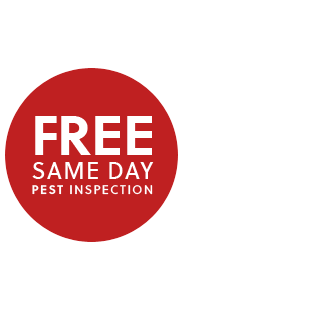Four signs your home may have drywood termites
When a termite problem rears its ugly head, the likely hot spot many homeowners suspect is in the soil underneath their home. That’s because the most commonly encountered termite – the destructive, wood-consuming subterranean termite – silently attacks structures from the soil underneath.
There is another termite species that doesn’t get down and dirty, but it still poses a significant threat to California homes.
Drywood termites live above ground in the exterior-facing wood in and around your home. The flying adult reproductives, called swarmers, can be seen on the exterior of a home on sunny fall days (September to November is prime swarmer season) after a spike in the thermometer following cooler temperatures.
Drywood termites are obscure insects that are difficult to detect. They live deep inside wood, and except during periods when they swarm or when repair work is being done on an infested home, they are seldom seen.
Drywood termite colonies are typically smaller, usually fewer than 1,000 individuals. Compared to their subterranean relatives, they can be widely dispersed in a home and take years to mature.
The areas of a home that are most susceptible to drywood termites include:
- Wood siding and wooden roof shingles
- Wood framing and support in attics
- Wood molding and framing around windows and doors
- Eaves and overhangs
- Protected joints or crevices in and around doors
How can drywood termites damage your home? They excavate a small tunnel into the wood, close it behind them, and create a hollowed-out chamber that depletes the structural integrity of the wood.
Drywood termites can stay dormant for extended periods of time (more than a year) and then re-emerge stronger and hungrier than ever. They also are creatures of habit and will re-infest the exact same location in a home, causing further damage.
Four signs that drywood termites may be inside your home
- Large numbers of flying insects on the exterior, and sometimes on the interior, of your home that are focused on the wood.
- Wings on windowsills, or you notice flying termites on the exterior your home.
- Hollow-sounding or visibly damaged wood that is honeycombed or carved out. If you can easily make a hole with a pocket knife or flat-blade screwdriver in the wood, it might be drywood termite damage.
- Unexplained piles of what looks like coarse grains of sand (these piles are termite fecal pellets sifted out of wood by the drywood termites).
It takes expert knowledge to know where to look for drywood termite activity, then analyze the findings, assess whether treatment is needed, and know what kind of treatment will work to arrest any termite activity that is found.
Drywood termite treatments are often categorized as a whole-structure or localized. The termite experts at Clark Pest Control will help determine what treatment plan will deliver the best results.
Whole-structure treatments are defined as the simultaneous treatment of all infestations, accessible and inaccessible, in a structure. Localized or spot treatments are more restrictive and are often applied to a single board or small group of boards.
If you suspect your home has a problem with drywood termites, call or text California’s trusted, friendly termite management expert, Clark, at (800) WE-NEED-YOU (936-3339) or send an email at clarkcares@clarkpest.com.
Until next time, the pest management professionals at Clark Pest Control thank you for helping to keep unwanted pests out of your home.


